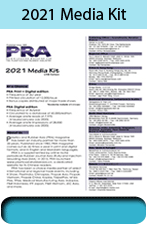Country Focus: Banking on Southeast Asia for growth in the new normal
A US$1-trillion loss from the pandemic, estimated by the United Nations Conference on Trade and Development (UNCTAD), is an expensive lesson to learn for global economies while recovery is anticipated to remain lethargic in 2021. The ASEAN region, seeing its economy fall for the first time in 22 years, has had to contend with the impacts of the pandemic since its prologue in March 2020. Despite the uncertain aftermath, the ASEAN- 5 grouping of Indonesia, Malaysia, the Philippines, Singapore, and Thailand are expecting a GDP growth of 5.2% in 2021.
Recovery of China, a boon to ASEAN
China, known as the world’s factory, is estimated to have garnered a 2.3% growth year-over-year in 2020; and projected to reach 8.1% in 2021, according to the International Monetary Fund (IMF)’s updated January 2021 economic outlook. The country rebounded more rapidly and re-opened gradually as early as April 2020.
ASEAN is anticipated to reap the benefits from its trade ties with China, its largest trading partner since 2009; and its fourth-largest external source of foreign investments (FDIs) in 2019, accounting for 5.7% of the region’s total FDIs.
Restoring growth momentum in the medical devices sector
While country lockdowns have caused several industries to push pause buttons, the medical technology sector has grown exponentially as demand for personal protective equipment (PPE), respirators, fans, test kits and other essential medical devices has increased and surpassed supply. Southeast Asia has benefited from its production capacity for PPE and medical devices. Digital healthcare readiness is another advantage. The emerging upper-income economies of countries like Thailand and Malaysia, for example, are both aiming to become the medical hubs of Asia.

In Thailand, medical devices are considered a high value sector. For this reason, the country has laid down the groundwork with enabling policies like tax incentives allowed by the country’s Board of Industry (BOI) for investment projects and the machines that they require, and on raw materials used in making exported products, and other duty exemptions. As well, the tenyear strategic plan spanning from 2016 to 2025 will cover four major areas: wellness, medical, academics, and products. This roadmap paves the way for developing a medical industry that is innovative and focused on R&D.
Thailand is a bastion of manufacturing for single-use, high-technology medical devices and appliances ranging from magnetic resonance imaging (MRI) and X-ray machines, surgical implants, and diagnostic tools to first aid kits, dental equipment, hospital beds, and others. The majority of its locally manufactured plastic and rubber medical devices are exported. According to Krungsri Research, 70% of the sector’s total sales come from exports and 30% from domestic sales.
Malaysia, another hotbed for the medical devices sector, boasts a strong distribution network via its 13 free industrial zones and other logistics channels. It also offers diverse medical technology ranging from surgical gloves, wound care, and other single-use devices to cardiac pacemakers, stents, orthopedic and imaging equipment.
To date, Malaysia has over 200 medical device manufacturers; and more than 30 multinational corporations (MNCs) producing high value-added medical devices. Over and above, Malaysia is the world’s largest nitrile and latex rubber gloves producer, accounting for more than 60% of global supply.
Domestic rubber glove makers and other emerging players have witnessed a growing demand for gloves during the Covid-19 pandemic and reaped the benefits from the growing global glove sector. Kenanga Research projects a 30% growth in Malaysia’s nitrile glove market share in 2020. In response to the growing demand, large glove manufacturers have expanded with additional production lines and land for new factories. Meanwhile, demand for medical gloves is projected to rise by 15-20% in 2021, according to the Malaysian Rubber Gloves Manufacturers Association (MARGMA).
Race to zero-emissions in the growing EV markets
In the ASEAN, the growing momentum to reduce carbon emissions in the environment is setting the stage for the 650 million consumers in the region to switch to green technologies.
Asia represented 16% of the world's total transportation emissions in 2006. By 2030, its share of vehicle-related carbon emissions is expected to rise to 31%. For this reason, the adoption of electric vehicles (EVs), including hybrid electric vehicles (HEVs), touted to generate zero emissions, is being promoted to reduce the carbon impact of the transport sector.
In Southeast Asia, the manufacture of EVs is gaining traction. Indonesia, the second largest car producer in the region after Thailand, plans to begin producing EVs in 2022. By 2025, EVs and HEVs will make up 20% of total vehicle production in Indonesia, with the country having good prospects of becoming a regional EV manufacturing centre by 2030.
Thailand, the biggest car manufacturer in Southeast Asia, is also expanding its EV industry. The Thailand government has established the National Electric Vehicle Policy Committee (NEVPC) that oversees the national EV roadmap targeting to produce 1.2 million EVs by 2035. The country’s BOI has also offered tax incentives for EV/ HEV projects such as tax holidays for manufacturers and businesses in the EV supply chain, including producers of battery modules and cells.
Vietnam is also making inroads in its EV production with the launch of three locally produced smart batteryelectric SUVs in January 2021, which are expected to debut in the US market in 2022. The country, which posted a 7% drop in total vehicle sales in 2020 against the previous year's sales, is charging ahead in its EV production plan, in its bid to mitigate its rising pollution levels.
Read more...
(PRA) Subscribe to Get the Latest Updates from PRA Please click here
©2021 Plastics and Rubber Asia. All rights reserved.

©2020 Plastics and Rubber Asia. All rights reserved.
Home Terms & Conditions Privacy Policy Webmail Site Map About Us













